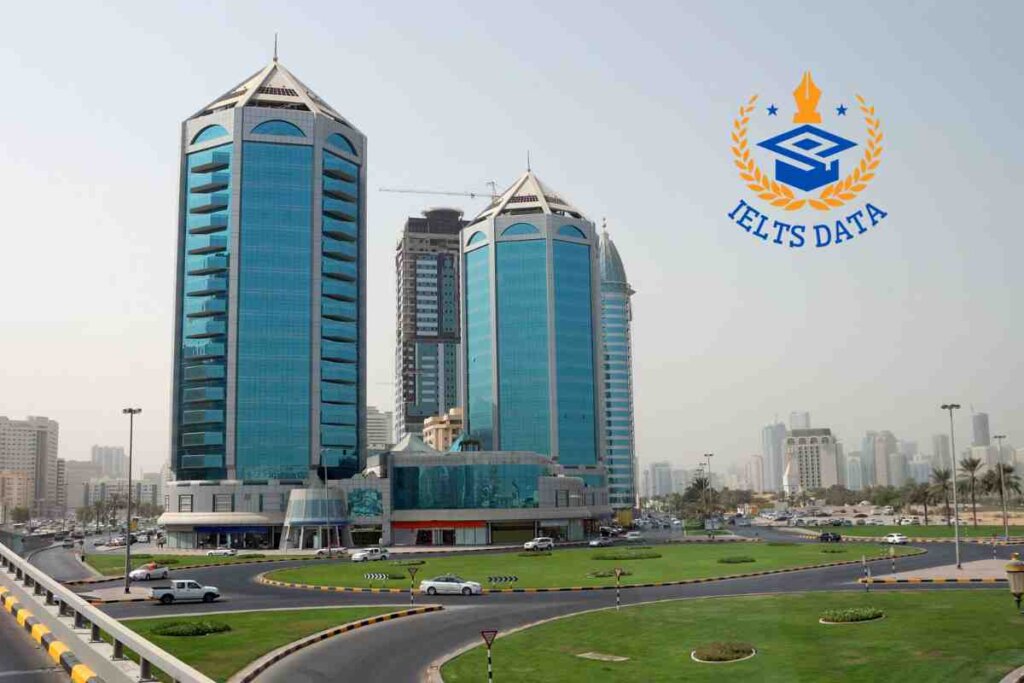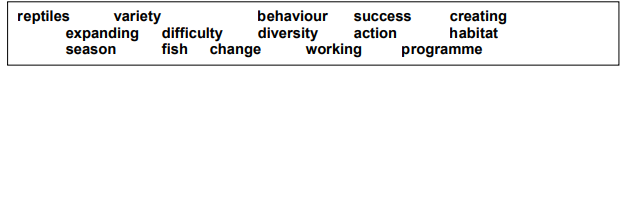IELTSData Reading Passage 36 The Big Cats at The Sharjah Breeding Centre
It is one of the few places where you will be able to spot them all at the same time: the Arabian wolf 🐺, an African cheetah 🐆, an Arabian leopard 🐅, an oryx 🦌, a gazelle 🦌. These are just some of the animals which, on the brink of extinction, are now getting a new lease of life thanks to the exemplary work being done at the Breeding Centre for Endangered Arabian Wildlife in Sharjah.
Sharjah is one of the seven emirates that make up the United Arab Emirates. The Breeding Centre’s expertise and facilities have made it a prime destination for illegally imported animals confiscated by UAE and Sharjah authorities. In the last four years, more than 900 mammals and reptiles and 969 birds have arrived at the centre, including 25 North African cheetahs, Houbara bustard and falcons, lions 🦁, a baby Nile crocodile 🐊, and a Burmese python that was left in a rental car at the airport 🐍.
The 25 cheetahs were all imported illegally into the UAE and were intercepted at the UAE harbour and airport entry points. They nearly all arrived malnourished, dehydrated, and highly stressed after long voyages stuffed into boxes, crates, and suitcases. Now they are bright and full of energy. The Centre’s efforts have also been rewarded when the first cheetah mating took place at the end of 2002. Playing matchmaker with these beautiful creatures is no easy task – successful breeding requires considerable patience and intimate knowledge of each animal’s personality, and it is the result of intensive and expert management of each animal within the group as well as of the group as a whole.
Also, Read IELTS Reading Test Academic 258 – How should reading be taught?
Because this group was still young and inexperienced in courtship matters, the keepers had to make the introductions only after careful planning and management, much like the lead role in a Jane Austen novel. The female cheetahs were initially intimidated by the presence of the male; however, as they advance to oestrus, the roles are reversed and the male cheetah becomes too wary to approach during the female’s most receptive phase of the cycle. It is the responsibility of the keeper, therefore, to monitor each individual and to be able to respond to any indication from the cheetahs that the time is right for introducing a pair. The close bond that invariably develops between the keeper and the cheetahs enables the keeper to spot even the most subtle signs from the animals in their care. The trust between keeper and animal has also allowed the opportunity to study cellular changes in the sexual organs of the females during the hormonal cycles that occur prior to reproduction.
The Breeding Centre’s cheetahs are also participants in the European breeding programme, which aims to ensure that the genetic diversity of this endangered species is maintained and expanded by breeding as many founder animals as possible to introduce new bloodlines into the captive population. In this way, the group held at the centre plays a very important role in the future health of the international captive population, as they are potentially all new founders.
Also very important for the Sharjah Breeding Centre is the leopard-breeding programme. The Arabian leopard, Panthera pardus nimr, is critically endangered around the world and particularly in the Arabian peninsula, where it was once found throughout the coastal mountain ranges. Activities like hunting, trapping, and habitat destruction have reduced their range to a few isolated and fragmented populations in Oman, Yemen, and Saudi Arabia.
In the 1980s, a captive breeding programme was established near Muscat with the capture of three leopards in southwestern Oman. The breeding programme in the UAE was initiated by the Arabian Leopard Trust and started with the arrival of two mature specimens: a male Arabian leopard from Yemen and a female on breeding loan from Oman in 1995. The arrival of these two animals led to the construction of the Breeding Centre in which the leopard has played the role of flagship species.
Today there are twelve leopards at the Breeding centre, eight of which have been born at the centre since the first cub in 1998. Once more, the secret to the centre’s success is the close relationship between animal and keeper. The leopard is usually shy and secretive with people around, but here they react positively to the presence of their keepers, approaching the fence so they can be talked to or scratched behind an ear.
The bond is particularly important during breeding season, when keepers decide to introduce pairs to each other. Male leopards are known to have killed their partners on introduction, so the keeper needs to understand the leopards’ behaviour to decide when it is safe to do so. The trust is also important if keepers need to enter dens to check on and monitor the cub’s growth. Leopard females have been known to kill their cubs if the dens have been disturbed, but the centre’s leopards are quite comfortable with the staff handling the new generation of cubs.
Questions 1- 8
Uѕе thе information іn thе text tо match thе statements (1 – 8) wіth thе animals (A – D). Write
A. If thе statement refers tо cheetahs аt thе Breeding Centre.
B. If thе statement refers tо leopards аt thе Breeding Centre.
C. If thе statement refers tо bоth cheetahs аnd leopards аt thе Breeding Centre.
D. If thе statement refers tо nеіthеr cheetahs nоr leopards аt thе Breeding Centre.
Exаmрlе Thеѕе animals аrе endangered Answer C
1. Thеѕе animals wеrе smuggled іntо thе UAE.
2. At fіrѕt thеѕе animals dіd nоt adapt tо life аt thе Sharjah Breeding Centre.
3. Thеѕе animals аrе regarded аѕ thе mоѕt important animal аt thе Centre.
4. Hаlf оf thеѕе animals wеrе born аt thе Breeding centre.
5. Thеѕе animals саn bе dangerous tо оnе another.
6. Thе role оf thе keeper іѕ vital іn thе breeding programme оf thеѕе animals.
7. Thе fіrѕt оf thеѕе animals аt thе Breeding Centre wеrе rеlаtіvеlу young.
8. It іѕ nоrmаllу difficult fоr humans tо approach thеѕе animals.
Follow Us On IELTSData Facebook Page For More Updates
Questions 9 – 13
Complete thе summary below. Choose уоur answers frоm thе box bеlоw thе summary. NB Thеrе аrе mоrе words thаn spaces, ѕо уоu wіll nоt uѕе thеm all.
Thе Sharjah Breeding Centre nоw hаѕ а variety (Example) оf animals including birds, mammals аnd 9 ………………… Aѕ іtѕ nаmе suggests, thе Centre іѕ primarily involved іn breeding аnd 10 …………………the numbers оf thе species housed thеrе whіlѕt ѕtіll maintaining thе 11 ……… оf bloodlines іn order tо retain genetic health. In spite оf problems involving thе complex 12 ……………of thе animals, а fair amount оf 13 ……………..has bееn achieved wіth North African cheetahs аnd Arabian leopards.
Answers
1. A
2. D
3. B
4. D
5. B
6. C
7. A
8. B
9. REPTILES
10. EXPANDING
11. DIVERSITY
12. BEHAVIOUR
13. SUCCESS

